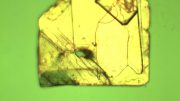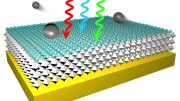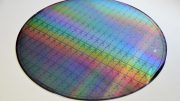
Researchers have developed a powerful and easier-to-manufacture memristor based on halide perovskite nanocrystals, which combines data storage and processing like brain cells. This technology aims to enhance parallel processing of large amounts of data with greater energy efficiency, rather than replacing classical computer architecture.
Enhancing computing through the use of perovskite nanocrystals.
Despite the advancements in technology, the human brain remains superior to computers in several ways. While computers can perform mathematical calculations faster than humans, the human brain is capable of processing complex sensory information and adapting to new experiences with ease. This ability is still beyond the reach of computers, and the human brain accomplishes this feat while consuming only a fraction of the energy required by a laptop.
The structure of the brain contributes significantly to its energy efficiency. Unlike computers, where memory and processing are separate entities and information needs to be transferred between them, the neurons and synapses in the brain are capable of both storing and processing information simultaneously. This eliminates the need for data to be constantly transported, which can cause slowdowns in computers when handling large amounts of information.
One possible solution to this bottleneck is novel computer architectures that are modeled on the human brain. To this end, scientists are developing so-called memristors: components that, like brain cells, combine data storage and processing.
A team of researchers from the Swiss Federal Laboratories for Materials Science and Technology (Empa), ETH Zurich, and the “Politecnico di Milano” has now developed a memristor that is more powerful and easier to manufacture than its predecessors. The researchers have recently published their results in the journal Science Advances.
Performance through mixed ionic and electronic conductivity
The novel memristors are based on halide perovskite nanocrystals, a semiconductor material known from solar cell manufacturing. “Halide perovskites conduct both ions and electrons,” explains Rohit John, former ETH Fellow and postdoctoral researcher at both ETH Zurich and Empa. “This dual conductivity enables more complex calculations that closely resemble processes in the brain.”
The researchers conducted the experimental part of the study entirely at Empa: They manufactured the thin-film memristors at the Thin Films and Photovoltaics laboratory and investigated their physical properties at the Transport at Nanoscale Interfaces laboratory. Based on the measurement results, they then simulated a complex computational task that corresponds to a learning process in the visual cortex in the brain. The task involved determining the orientation of light based on signals from the retina.
“As far as we know, this is only the second time this kind of computation has been performed on memristors,” says Maksym Kovalenko, professor at ETH Zurich and head of the Functional Inorganic Materials research group at Empa. “At the same time, our memristors are much easier to manufacture than before.”
This is because, in contrast to many other semiconductors, perovskites crystallize at low temperatures. In addition, the new memristors do not require the complex preconditioning through the application of specific voltages that comparable devices need for such computing tasks. This makes them faster and more energy-efficient.
Complementing rather than replacing
The technology, though, is not quite ready for deployment yet. The ease with which the new memristors can be manufactured also makes them difficult to integrate with existing computer chips: Perovskites cannot withstand temperatures of 400 to 500 degrees Celsius that are needed to process silicon – at least not yet. But according to Daniele Ielmini, professor at the “Politecnico di Milano”, that integration is key to the success of new brain-like computer technologies.
“Our goal is not to replace classical computer architecture,” he explains. “Rather, we want to develop alternative architectures that can perform certain tasks faster and with greater energy efficiency. This includes, for example, the parallel processing of large amounts of data, which is generated everywhere today, from agriculture to space exploration.”
Promisingly, there are other materials with similar properties that could be used to make high-performance memristors. “We can now test our memristor design with different materials,” says Alessandro Milozzi, a doctoral student at the “Politecnico di Milano”. “It is quite possible that some of them are better suited for integration with silicon.”
Reference: “Ionic-electronic halide perovskite memdiodes enabling neuromorphic computing with a second-order complexity” by Rohit Abraham John, Alessandro Milozzi, Sergey Tsarev, Rolf Brönnimann, Simon C. Boehme, Erfu Wu, Ivan Shorubalko, Maksym V. Kovalenko and Daniele Ielmini, 23 December 2022, Science Advances.
DOI: 10.1126/sciadv.ade0072









… RNN-s had fatal flaw, but transformers solved it… it looks like the SpaceX-s rocket is on the brink of that technology… some not fired… so many …
Is it an albatross or an ostrich… Might be more vise to use few of those fat ones and bundle them together for a first stage… sinc so many can be hard even for: Sergei Korolev and Wernher von Braun, too… might be the edge of application for that technology….